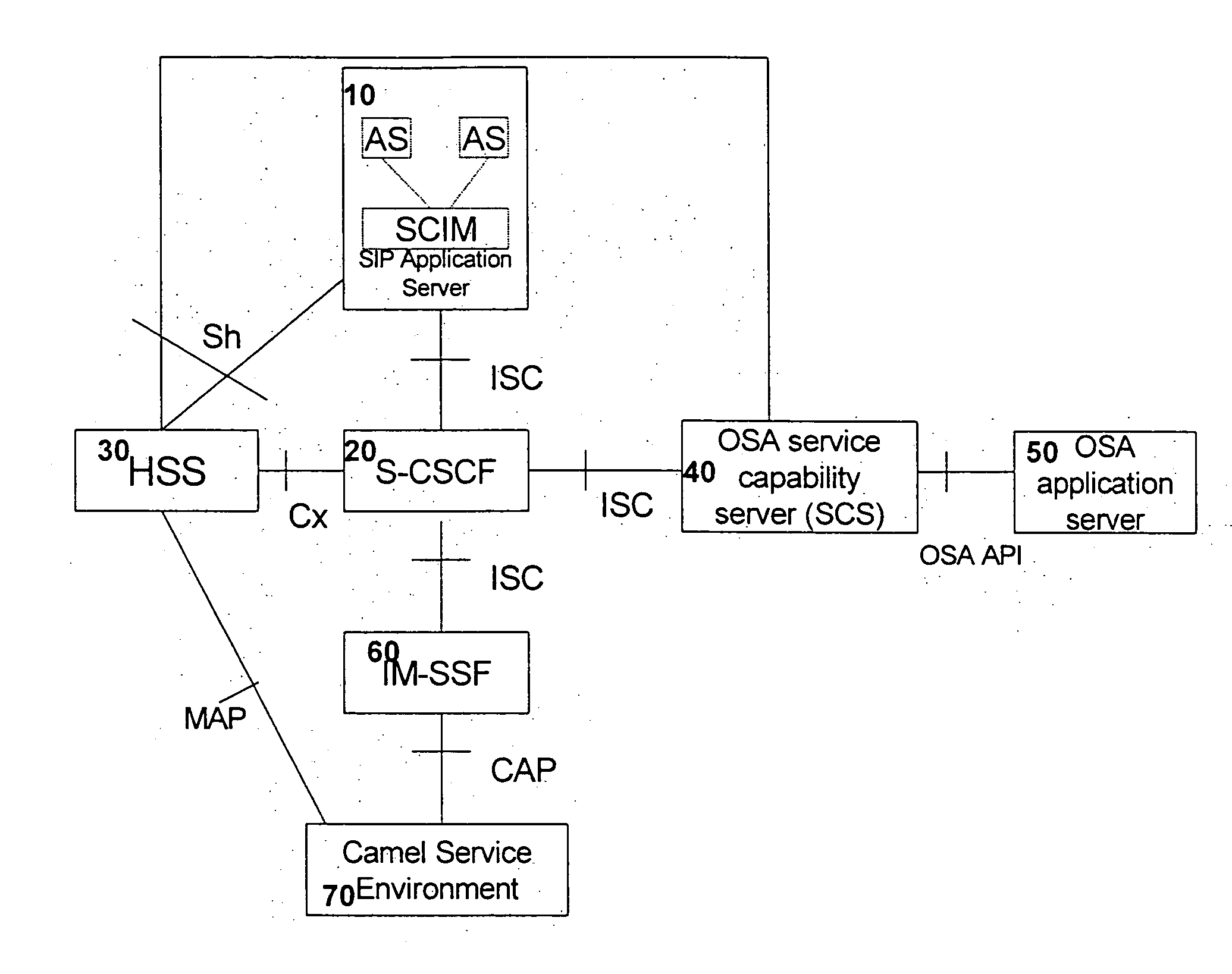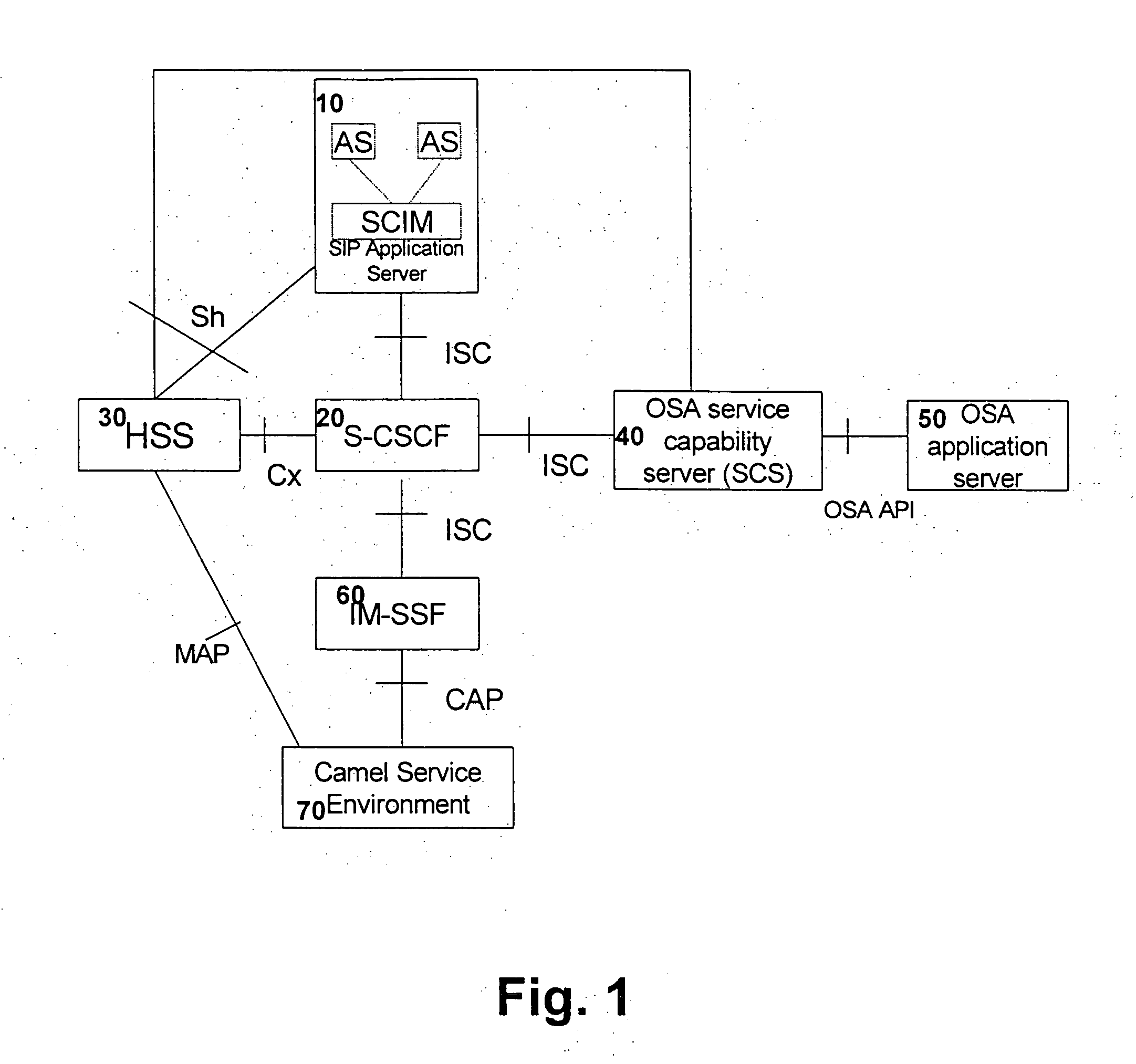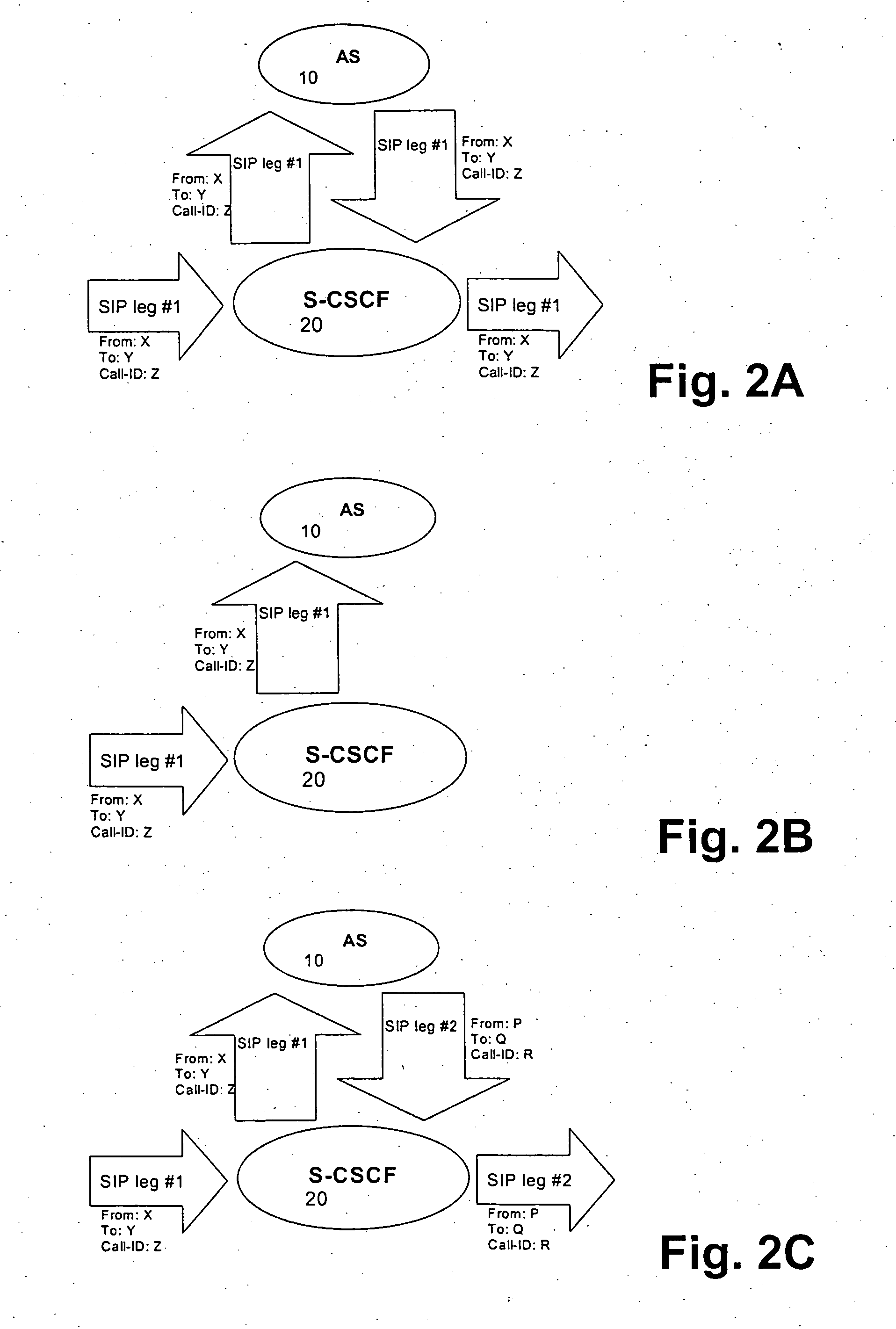Method and system for proxying a message
- Summary
- Abstract
- Description
- Claims
- Application Information
AI Technical Summary
Benefits of technology
Problems solved by technology
Method used
Image
Examples
example 1
[0045] In case the AS 10 is only allowed to proxy the SIP request, the header field may look as follows: [0046] [...][0047] Allowed-Modes: proxy [0048] [...]
example 2
[0049] In case the AS 10 is allowed to either proxy or terminate the incoming SIP request the header field may look as follows: [0050] [...][0051] Allowed-Modes: proxy, UAS [0052] [...]
example 3
[0053] In case the AS 10 is allowed to initiate sessions, in addition to the example 2, the header field may look as follows: [0054] [...][0055] Allowed-Modes: proxy, UAS, UAC [0056] [...]
PUM
 Login to View More
Login to View More Abstract
Description
Claims
Application Information
 Login to View More
Login to View More - R&D
- Intellectual Property
- Life Sciences
- Materials
- Tech Scout
- Unparalleled Data Quality
- Higher Quality Content
- 60% Fewer Hallucinations
Browse by: Latest US Patents, China's latest patents, Technical Efficacy Thesaurus, Application Domain, Technology Topic, Popular Technical Reports.
© 2025 PatSnap. All rights reserved.Legal|Privacy policy|Modern Slavery Act Transparency Statement|Sitemap|About US| Contact US: help@patsnap.com



